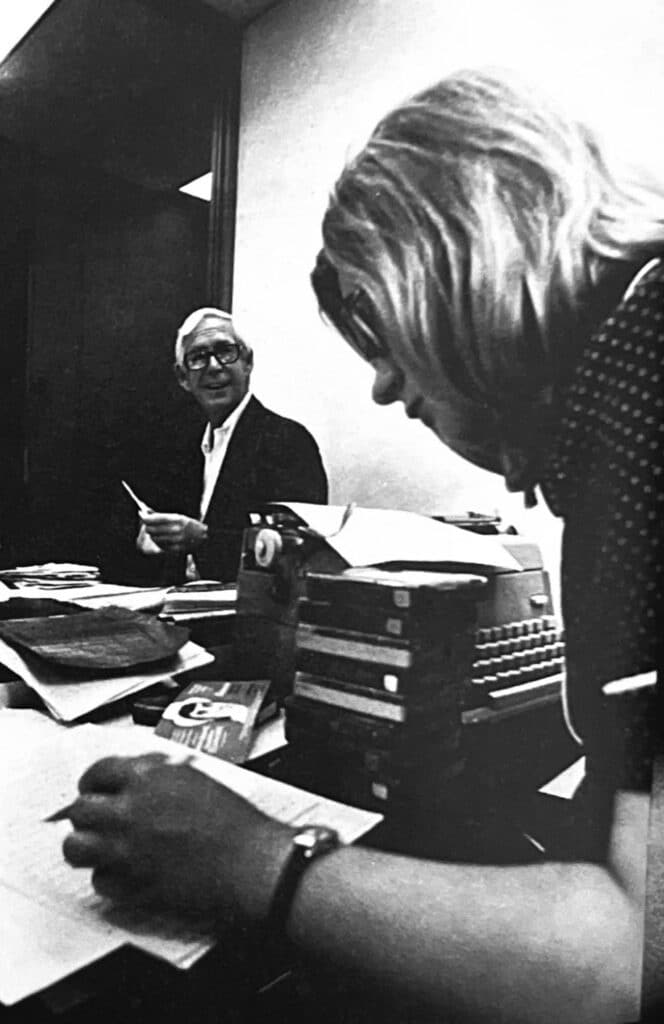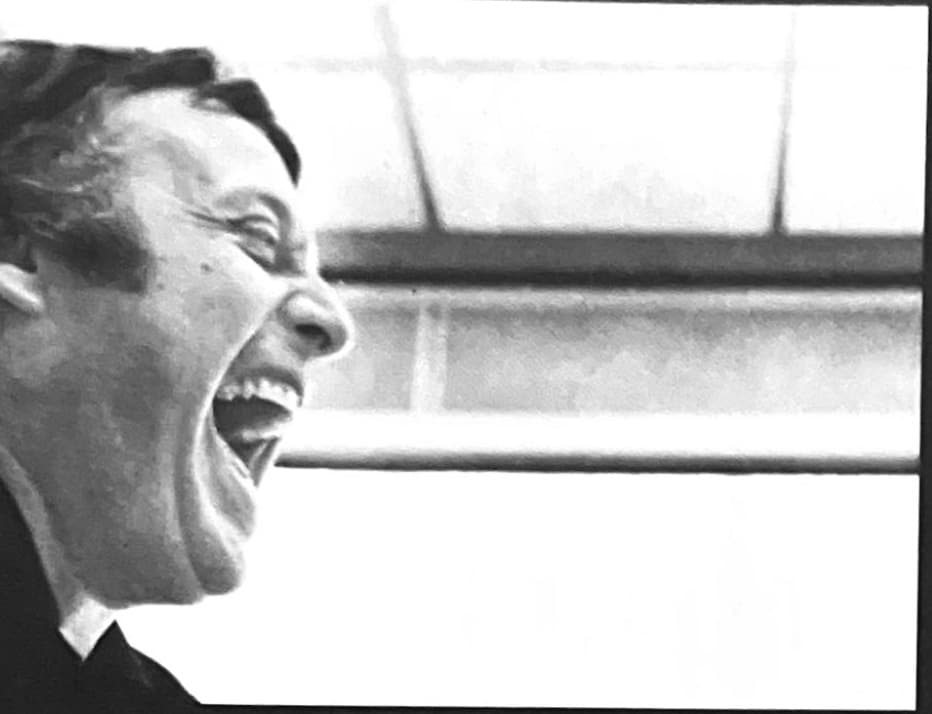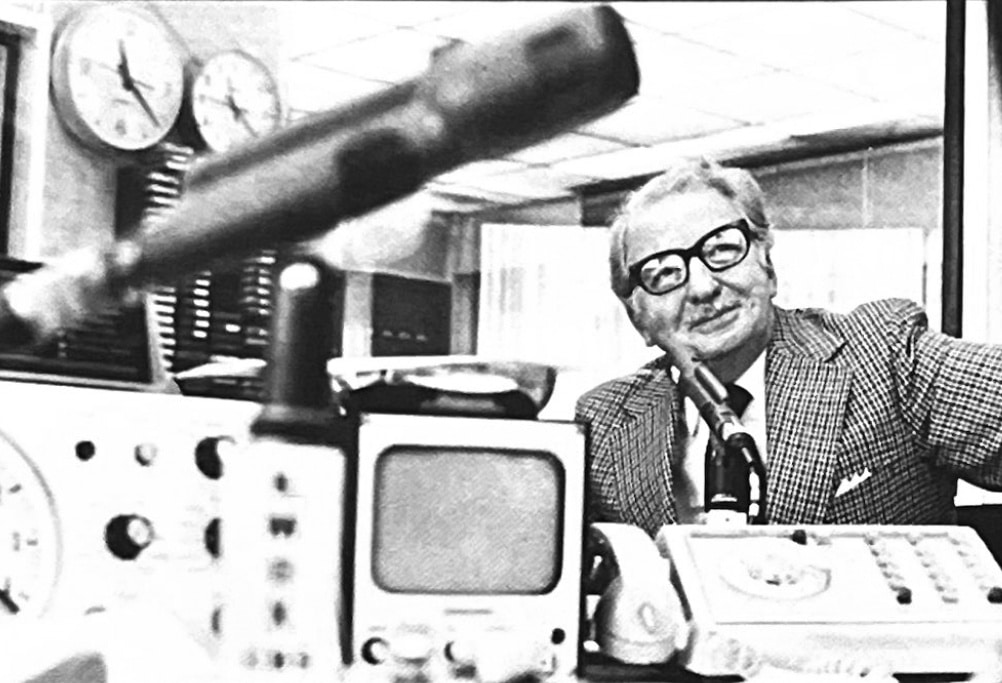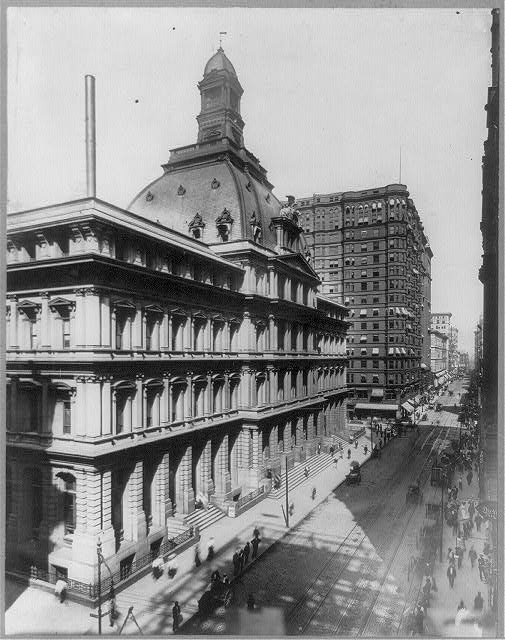Fifty years ago, Missouri Life took readers behind the mic at KMOX in St. Louis, an indisputable radio powerhouse throughout the Midwest. Journey back to the days before podcasts and TV news channels, when radio still ruled the airwaves.

Rich Koster, Photos by T. Mike Fletcher
Jack Buck and Jack Carney … Jim White and Bob Hardy … Rex Davis and John McCormick … Dan Kelly and Bob Starr … Harry Fender and Tom Jones … Bob Burnes and Don Miller.
The Voices of St. Louis.
From the third floor studios at No. 1 Memorial Drive. From stadiums and arenas around the land. From wherever it’s happening.
They’re coming. at you. In 44 states. In five Canadian provinces. Twenty-four hours a day. Seven days a week. Year round.
KMOX radio: The News, Sports, and Total Information Voice of St. Louis.
It’s a claim. A boast. But it’s also a fact. As irrefutable as Robert Hyland’s competitive pride, Jack Buck’s wit or Harry Fender’s memory.
At a time when everyone wants to be No. 1, KMOX simply refuses to be anything but. Some people maintain that it’s simply the world’s greatest radio station. Somewhere out there west of the Rockies or up there East of the Hudson, there may be an electronic giant up to a challenge. But across the heartland of America, north and south, east, and west, KMOX dominates. In concept, in talent, in reaching the audience.
KMOX is many things to the many millions who listen to it, who rely on it, who swear by it. And, occasionally, at it.
It’s Jim White and Bob Hardy climbing out of the sack at 4:30 a.m., so the guy who goes to work at 6 will know what happened while he slept.

It’s Jack Carney and Rex Davis, the Odd Couple, giving dimension to the morning. Making it more bearable, offering a kind of companionship.
It’s Bob Burnes remembering what Chet Laabs hit in 1944. It’s Jack Buck describing the hit and run with the kind of sophistication Walter Cronkite applies to a blast-off at Cape Kennedy.
It’s Dan Kelly and Bob Starr transmitting the excitement of hockey and football. It’s Harry Fender from the Steeplechase, Don Miller from his helicopter and John McCormick from midnight to 6 a.m.
They talk about everything. Anything. And sometimes nothing. But it works. A mosaic of sound ranging from Davis’ editorials to the subtlety of Buck’s wit to the encyclopedic contents of White’s brain.
What it all adds up to is a product that is greater than the total of its individual talents. KMOX was No. 1 before White and Carney and Kelly and Starr.
And when the smoke cleared and the echoes died following the departures of Harry Caray and Charles Ashman, the Voice was still loud and clear. And still far above all the rest.
Why? How? Why should KMOX be No. 1, and nobody else No. 2? Why should it be so far ahead?
Talent, obviously. No other station within earshot has such quality or quantity. But that’s just the beginning.

Even the Bucks and Carneys, the Davises and Whites would fall far short of the KMOX level without direction, without format, without philosophy.
Willie Davis and Paul Hornung and Bart Starr were just three guys in shoulder pads until Vince Lombardi came along. And KMOX was neither a national, state, nor local giant before Bob Hyland took over in 1955.
While other radio “leaders” were lamenting the explosion of television, Hyland refused to retreat even a decibel. He took a medium that was feared moribund and put it on the offensive.
To those who do not know him, Hyland, a national vice-president of CBS radio and the true voice of authority of the Voice of St. Louis, is something of an enigma. He’s unpredictable, and he’s hardly universally popular with the competitors who really can’t compete with him.
But even those farthest in arrears admit grudgingly their respect for him. At KMOX, he is a presence as well as a direction.
The talents at the station are individualists to a man. They are professionals and most are secure in the knowledge that they could abandon KMOX for impressive jobs elsewhere.
But they take pride in being “out front” on a station that won’t accept second best. And while there is more than occasional humor about how hard Hyland works himself and them, there is no argument about who leads, about who decides.
Bob Hyland sits in his corner office suite and sometimes, it all seems like just a projection of his imagination. Which, in a sense, it is.
All of the innovations — now proliferated around the world, as well as the country — are Hyland’s. While other stations were surrendering to record shows hosted by addled disc jockeys, Hyland was enlarging KMOX’s horizons.
The “At Your Service” format, which was launched in 1960, has attracted more than 6,000,000 callers. Almost 21,000 guests have been interviewed and interrogated by the KMOX listeners.
Hyland’s philosophy is simple. He wants to win, to be the best. Not just the best radio station. The Best. Period. He has not only survived television; he has prevailed.
“I don’t think anything will ever take the place of radio,” he says. There is nothing like the imagination of radio.” He believes that the image of the mind is greater than the image on the 23-inch screen.
“We’re No. 1,” he stresses, “because we work at it. We’re dedicated to it. All of us. If we get knocked off, it’s our own fault.”
Getting “knocked off,” of course, is beyond the realm of even Bob Hyland’s imagination. His “four-in-one” concept for KMOX would be formidable without his high-salaried stars. With them, it’s electronic invincibility.
“We’re not a sports station,” he explains,” and yet we are. We’re not an entertainment station, and yet we are. We’re not news, and yet we are. We’re not information, and yet we are.”
KMOX is No. 1 in all those areas, individually and collectively. It’s a station of service to its listeners.
“When radio was attacked by television, “Hyland says, “too many people who should have known better capitulated. They put the records on. I decided that if that was all we could do, I’d get out of the business.”
So there has been no capitulation. KMOX has made the voice as recognizable as the face. The television stations come on strong in the evening, but around the clock, they compete mainly with themselves in St. Louis. Hour in and hour out, they simply don’t offer what KMOX does.
Housewives in their kitchens and salesmen in their cars smile, chuckle and laugh out loud at Carney and Davis in the morning and a sportsoriented public never misses a pitch, a punt, or a check of the Cardinals, Big Red or Blues throughout the calendar year.
If you’re an insomniac, John McCormick will keep you company through the silence and darkness. And if you’re not, White and Hardy will be there when you wake up.
If you’ve got a question, any question, your day and your category will eventually pop up in the middle of some otherwise uneventful afternoon.
All you need do is place your radio dial on the 1120 mark. KMOX will do the rest. It will provide the laughter, the excitement, the information.
It will even follow you to those other 43 states and Canada.
Paul Harvey: The Rest of the Story • Missouri Life Magazine
Article originally published in the November/December 1973 issue of Missouri Life.
Related Posts
Missouri History Today October 12, 1942: Life Magazine Showcases St. Louis History Mural
Missouri History Today October 12, 1942: Life Magazine Showcases St. Louis History Mural
Freezing Temperatures in St. Louis
On December 24, 1872, a 20˚ below zero temperature was recorded for St. Louis.
Tornado Outbreak in St. Louis
On September 29, 1927, a tornado in St. Louis killed 85, injured as many as 1,500, and destroyed much of the area from Webster Groves to the Central West End and eastward to the Mississippi.



